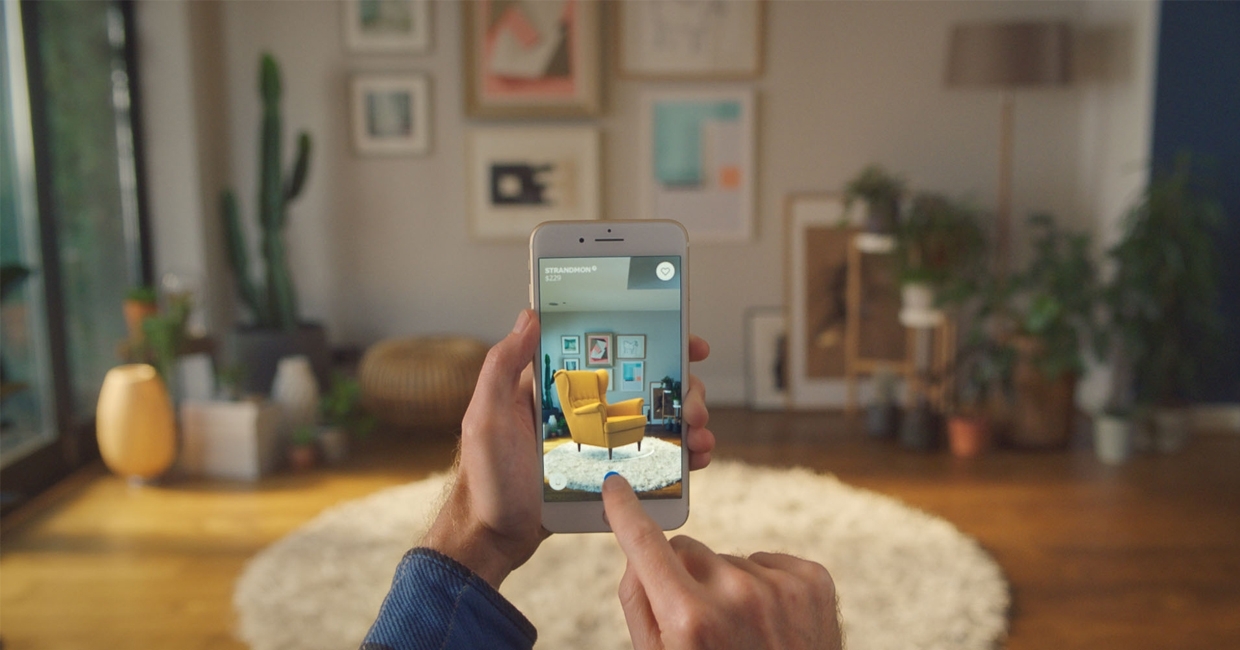Hold the phone! Augmented reality (AR) is set to revolutionise the way people shop for furniture online – so why hasn’t the industry fully embraced it yet? Paul Farley probes some of the sector’s top tech minds for answers …
Firstly, the basics. Not quite virtual reality (VR, a fully immersive computer-generated experience that tends to involve a cumbersome and expensive array of headset and motion paddles), augmented reality (AR) involves the placement of virtual objects into real-world environments, usually through a viewing device such as a smartphone or tablet.
Want to see how that sofa would look in your own living room? Whether it’ll fit the space, and what the best configuration/colour/material might be? It’s all in the palm of your hand – in theory.
AR technology as we know it has gathered momentum for over a decade. In 2008, BMW Mini published a printed advert which, when viewed through a computer’s camera, generated a virtual model of the car in the ad, which could be viewed from various angles by moving the paper around.
Since then, we’ve seen everything from gamers hunting virtual monsters in Pokémon Go, to virtual dressing rooms complete with smart mirrors.
In the homewares sector – arguably a prime candidate for try-before-you-buy applications – IKEA has led the way, with a whole catalogue of home products that can be ‘placed’ and viewed anywhere in a room, by any shopper with a smartphone (and recently evolved into complete room-design tool, IKEA Studio).
Rapidly advancing mobile technology means most UK consumers now have the key to AR in their hands, and, with online sales flying, it’s hard to imagine a future without this technology at the heart of the ecommerce experience. So, what’s stopping the trade embracing it with open arms?
Firstly, there are relatively few ways to engage with AR other than through dedicated apps (which first have to be downloaded), creating a significant barrier to more mainstream use. In an investigation of Europe’s top furniture brands earlier this year, visualisation specialist Cylindo found that none of the companies surveyed boasted web-native AR (which enables the creation of an AR preview directly from the browser). In the US, the proportion stood at just 3%.
“No question for me that AR will have to be web-native,” David Kohn, Heal’s customer and ecommerce director, told Cylindo. “Most furniture retailers will struggle to persuade enough customers to load their specific room-planning app, so they will have to rely on their web presence.”
There’s also the problem of integrating the technology with existing websites, its difficult-to-ascertain ROI, and the myriad of challenges facing retailers and suppliers in a world rocked by Covid-19.
Some furniture businesses are only just setting foot on the ladder to AR, by creating virtual 3D models of their products for use in online images, 360° views and configurators. Admittedly, it can feel ahead of its time – but all the evidence indicates that AR is coming, and it promises to radically transform the way people shop for furniture.
The experts urging the trade to get in on the ground floor in this month’s special feature are: Dalia Lasaite, CEO and co-founder, CGTrader; Paul Galley, MD, Symmetry CGI; Paul Stott, owner and director, The Virtual Works; Rob Walker, MD, Orbital Vision; and Janus Jagd, co-founder and CEO, Cylindo.
Ready for some extra screen time? Read this month's issue to find out what they had to say.
Pictured: IKEA’s Place app enables shoppers to virtually place true-to-scale 3D models in their own spaces












